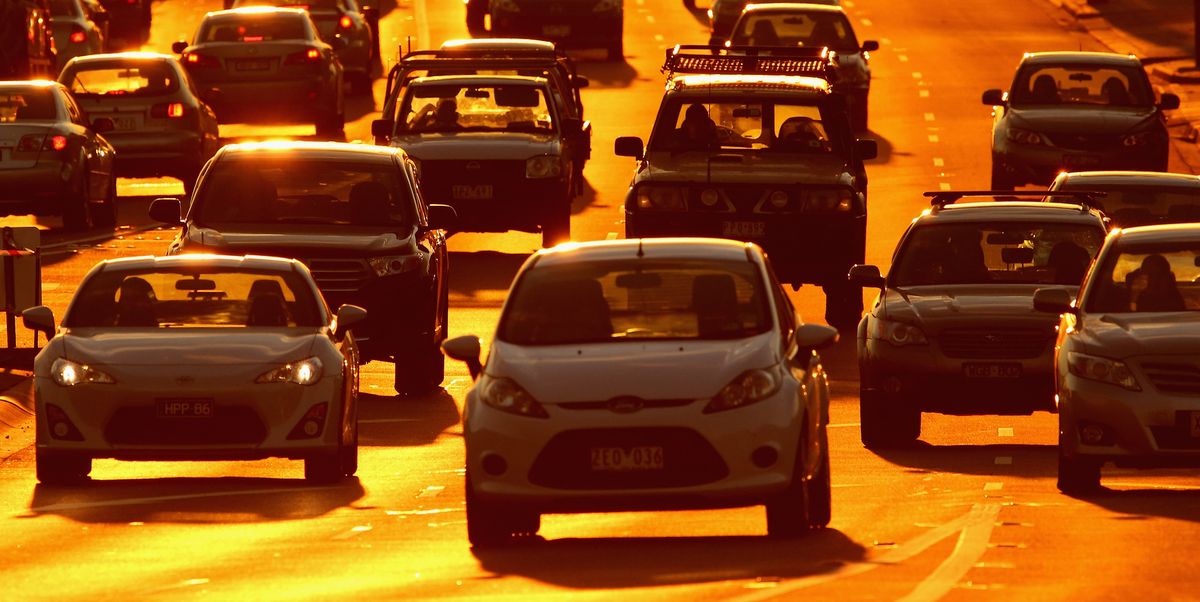Tailgating is a rather loose term than can mean anything from an inch from the car in front to 2.99 seconds behind depending on what you consider it to be. That being said I am not saying its best to bump draft the car in front so nobody can ever get in front of you, that's dumb. What I am saying is that leaving 3 seconds of follow while in traffic will increase slowdowns. By traffic I mean any time the flow of traffic is below limits by the way. Meaning the road has more people on it that the flow can support.
My point is I dispute that. I don't see that happen even in stop and go traffic, as long as the car is in sync with the car in front (meaning it's not constantly varying the speed relative to the car in front).
That study also mentions absolutely nothing about a 3 second gap and everything about maintaining a flow and equal distances in front and behind which is exactly what I try to do and recommend attempting to do. As the little graphic also shows, attempting to leave following distance in front that is larger than anyone else in the lane is a major cause of heavy slowdowns.
The red car is simulating a car braking/slowing rapidly in response to stimuli, making the car significantly slower than the car in front. It's not that gap that is the issue (if the car was following the car in front at same speed it wouldn't be an issue).
The issue is the cars behind are too close to smoothly respond to slowdowns in the front, so it causes a cascading effect. That's exactly what the 3 seconds is designed for (it's based on reaction time)!
Also, its usually referred to as the 3 second rule because its rarely actually a law. That's definitely not a law in California or Nevada. I'm not even aware of any state where it is an actual law now that I think about it.
The 3 second rule is not explicitly put in the law because there are circumstances that you need longer than 3 seconds of gap (for example in poor weather).
There is a law against tailgating however:
"The driver of a motor vehicle shall not follow another vehicle more closely than is
reasonable and prudent, having due regard for the speed of such vehicle and the traffic upon, and the condition of, the roadway."
https://law.justia.com/codes/california/2017/code-veh/division-11/chapter-3/article-2/section-21703/
If you look at ticket fighting sites, "reasonable and prudent" as determined in traffic court is essentially the 3 second rule (plus whatever reasonable longer gap given road conditions):
21703: Declaration Strategy 1 – TicketAssassin
21703: Declaration Strategy 2 – TicketAssassin
Basically you can successfully fight the ticket if the officer references only car lengths or feet in citing you for a ticket (as that's not enough info to determine seconds of following distance), but not if officer establishes enough facts to determine your following distance is significantly less than the 3 seconds referenced in the driver handbook (for that they will need not only the distance but also the speed of both cars).
Nevada uses a 2 second rule instead (see page 38 in driver handbook, it's more exactly 2-4 seconds or more, but 2 is the minimum), which is probably why you never see people using 3 seconds in your location.
https://www.dot.nv.gov/home/showpublisheddocument/112/636178632858000000
Your state law also uses "reasonable and prudent" which I suspect, like CA is also determined by the rules in the driver handbook if you go to traffic court for such a ticket.
NRS: CHAPTER 484B - RULES OF THE ROAD


